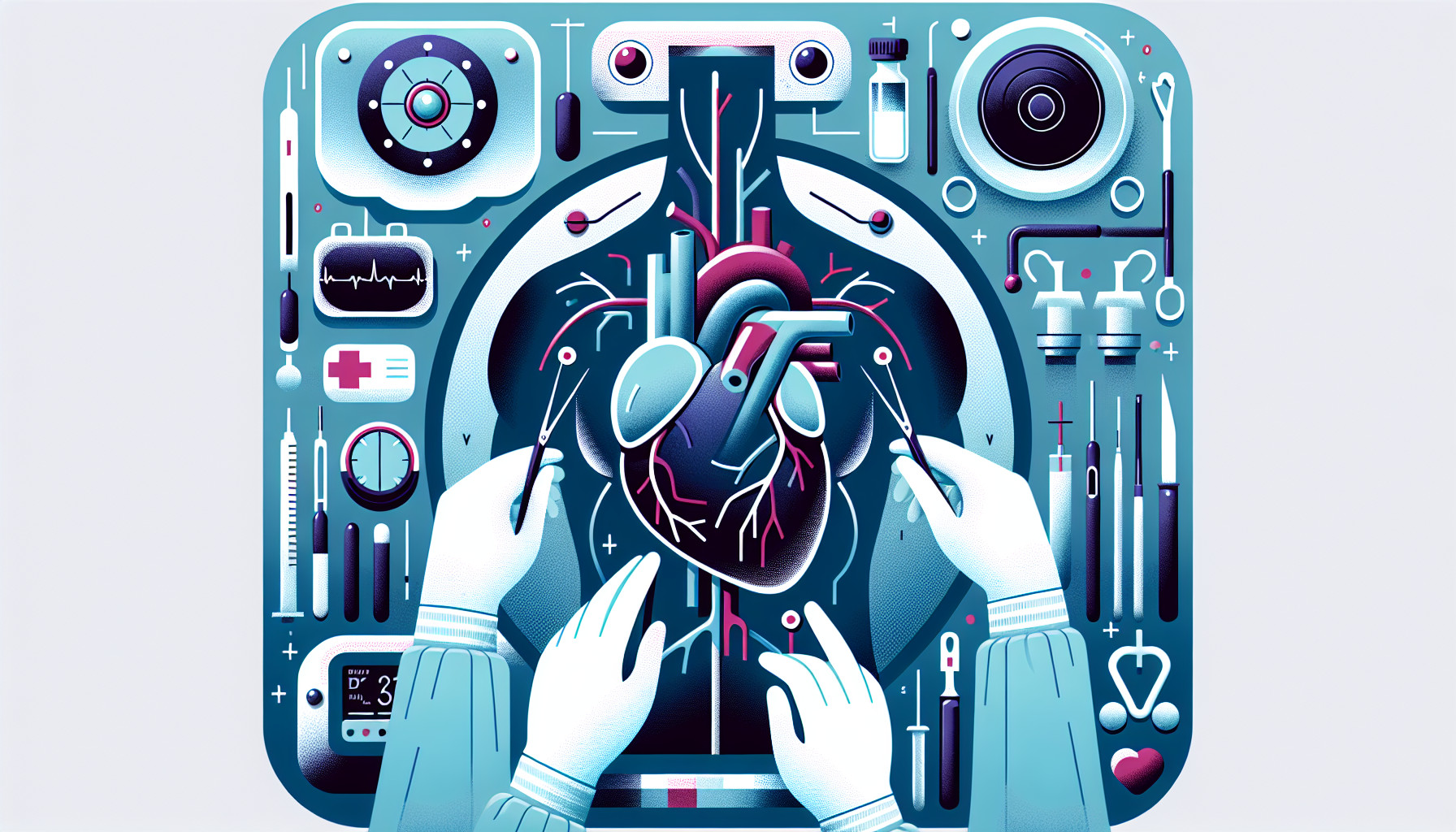Our Summary
This research paper discusses two different types of heart bypass surgeries: Off-pump coronary bypass surgery and On-pump coronary bypass surgery. Unfortunately, without an abstract or more details, it’s tough to provide a more specific summary. Generally, these kinds of studies typically compare the two methods of surgery in terms of things like patient recovery time, surgical success rates, and risk factors. Off-pump and On-pump surgeries refer to whether the patient’s heart is still beating during the procedure (off-pump) or if the heart is stopped and a heart-lung machine is used (on-pump).
FAQs
- What is CABG in the context of coronary bypass surgery?
- What is the difference between off-pump and on-pump coronary bypass surgery?
- What are the key terms to know when discussing coronary artery bypass?
Doctor’s Tip
One tip a doctor might give a patient about coronary artery bypass is to follow a healthy lifestyle post-surgery, including maintaining a balanced diet, regular exercise, quitting smoking, and managing stress levels. These lifestyle changes can help prevent further blockages in the arteries and improve overall heart health.
Suitable For
Coronary artery bypass surgery (CABG) is typically recommended for patients who have severe coronary artery disease that cannot be effectively treated with medication or less invasive procedures. These patients may have blockages in multiple coronary arteries, significant narrowing of the left main coronary artery, or other high-risk factors such as diabetes, reduced heart function, or previous heart attacks.
Patients who continue to have symptoms of angina (chest pain) despite medical therapy, or who are at high risk for a heart attack or other serious complications, may also be recommended for CABG. Additionally, patients with complex coronary anatomy that is not well suited for less invasive procedures like angioplasty and stenting may benefit from CABG.
Ultimately, the decision to recommend CABG is based on a thorough evaluation of each individual patient’s medical history, symptoms, risk factors, and overall health status. It is important for patients to discuss the risks and benefits of CABG with their healthcare provider in order to make an informed decision about their treatment options.
Timeline
Before coronary artery bypass surgery:
- Patient is diagnosed with coronary artery disease through symptoms, diagnostic tests, and medical history.
- Patient undergoes pre-operative evaluations including blood tests, imaging tests, and cardiac catheterization.
- Patient may be placed on medications to manage symptoms and reduce risk of complications.
- Patient receives pre-operative counseling and education about the surgery and recovery process.
During coronary artery bypass surgery:
- Patient is taken to the operating room and given anesthesia.
- Surgeon makes an incision in the chest to access the heart and bypass blocked arteries.
- Surgeon harvests healthy blood vessels from another part of the body to use as grafts for the bypass.
- Surgeon connects the grafts to the blocked arteries to create new pathways for blood flow.
- Surgery may be performed on-pump (with the assistance of a heart-lung machine) or off-pump (without the use of a heart-lung machine).
- Surgery typically takes several hours to complete.
After coronary artery bypass surgery:
- Patient is transferred to the intensive care unit for monitoring and recovery.
- Patient may experience pain, fatigue, and discomfort in the chest and incision site.
- Patient is gradually weaned off of medications and breathing support.
- Patient begins cardiac rehabilitation to regain strength and improve cardiovascular health.
- Patient is discharged from the hospital and continues recovery at home with follow-up appointments and medications.
- Patient may need to make lifestyle changes such as diet, exercise, and smoking cessation to reduce risk of future heart problems.
What to Ask Your Doctor
- What are the potential risks and complications associated with coronary artery bypass surgery?
- How long is the recovery period after the surgery?
- Will I need to make any lifestyle changes after the surgery?
- What is the success rate of the procedure in terms of improving blood flow to the heart?
- How long will the benefits of the surgery last?
- Are there any alternative treatment options to coronary artery bypass surgery?
- What is the difference between on-pump and off-pump coronary bypass surgery, and which option is recommended for me?
- How many of these procedures have you performed, and what is your success rate?
- What will the post-operative care plan look like, and what should I expect during the recovery process?
- Are there any specific dietary or exercise recommendations I should follow post-surgery?
Reference
Authors: Alvarez JM. Journal: Heart Lung Circ. 2023 Mar;32(3):284-286. doi: 10.1016/j.hlc.2023.02.002. PMID: 36958871
